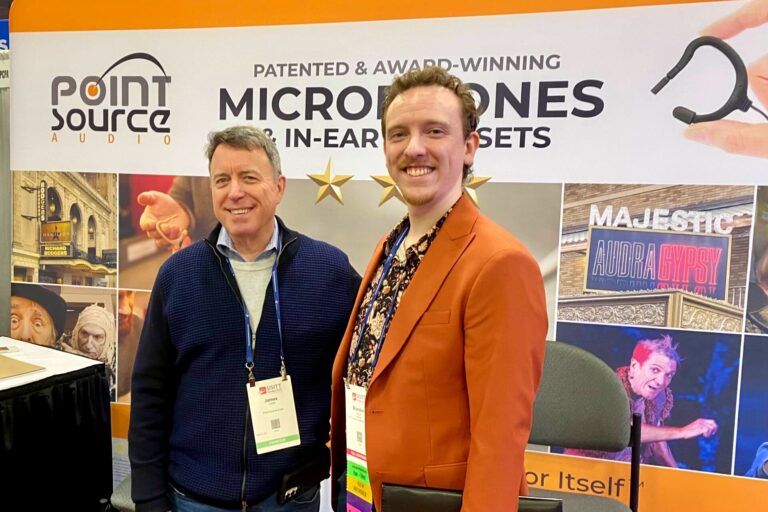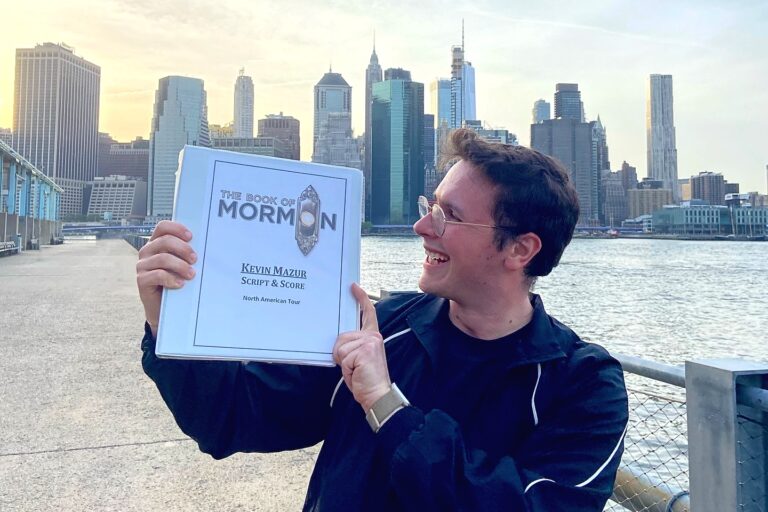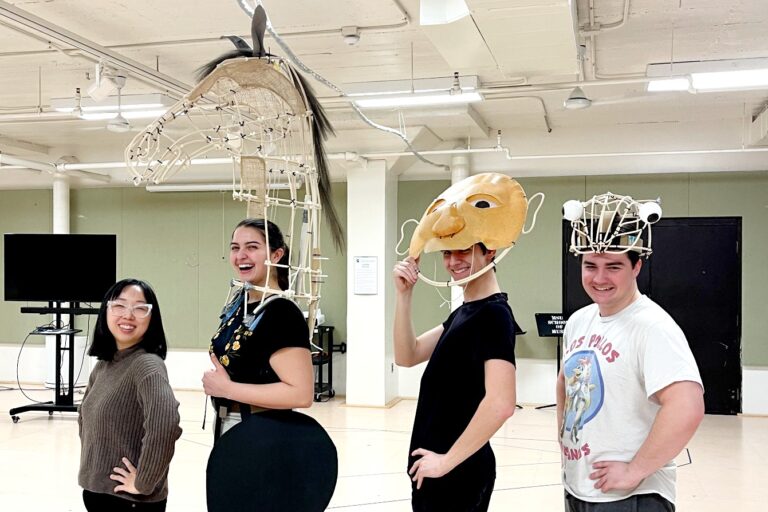A new musical by Department of Theatre Professor Rob Roznowski explores the relationship between the arts and STEM (science, technology, engineering, and mathematics), focusing on how important creativity and artistic expression are to innovation in STEM fields.
The STEAM Plays: Using the Arts to Talk About STEM makes the case for STEAM (science, technology, engineering, arts, and mathematics) over STEM education in fun and entertaining ways. This original musical comedy is the brainchild of Roznowski with music and lyrics by Seth Burk, an MSU graduate with degrees in Music Composition and Music Education.

The STEAM Plays has been performed, to much acclaim, at several local elementary schools during the Fall 2023 semester. Now, two free public performances are scheduled for Saturday, Dec. 2, at 10 a.m. and 12 p.m. at the FRIB (Facility for Rare Isotope Beams) Theatre on Michigan State University’s campus. In addition, pre-show activities will be offered for children, in partnership with the MSU Science Theatre, prior to both Dec. 2 performances.
Roznowski was part of the inaugural STEAMpower fellowship at MSU, which is designed for graduate students who are interested in linking the arts, humanities, and STEM. As a STEAMpower Fellow, Roznowski researched STEAM education, which aims to incorporate the arts — visual arts, language arts, physical arts, music, etc. — with a focus on sparking imagination and creativity in ways that naturally align with STEM learning.
“With most of the research I had done on STEAM education, the arts felt additive to STEM rather than integral,” Roznowski said. “I wondered how I could explore how the arts and STEM overlap rather than remain separate.”
“With most of the research I had done on STEAM education, the arts felt additive to STEM rather than integral. I wondered how I could explore how the arts and STEM overlap rather than remain separate.”
Rob Roznowski, Professor of Theatre
Roznowski decided to write a play on the subject geared toward young audiences.
The 45-minute show includes five sections — one for each letter of the acronym “STEAM” with each scene linking the arts to a section of STEM — and includes six songs by Burk and 20 separate short comedic scenes.
“Each scene is about that premise of the need for STEAM education,” Roznowski said. “There is a running gag of an ‘Evil Genius’ trying to switch the bodies of scientists, technologists, engineers, and mathematicians with artists to disrupt STEM education.”
In one scene, the Evil Genius tries switching the bodies of Pythagoras and Taylor Swift until he realizes that music is all about math. Other scenes include kids using technology to inspire their imagination, a dancer whose understanding of anatomy helps her to dance, and the dress of a celebrity that is a feat of engineering.
Combining Arts with Technology
The STEAM Plays cast and crew are made up of all Department of Theatre students, including two graduate and 11 undergraduate students.
In line with the project’s emphasis on the overlap between the arts and technology, Thalia Lara, the designer for all technical aspects of the production (sets, media, costumes, and props) who is a third-year MFA in Design student in the Department of Theatre, used image generators enabled by artificial intelligence to conceptualize the projected media, which makes up the majority of the scene changes and the artistic collages that give the set its unique personality.

“Embracing innovation and technology is natural for me as a creative. I have always found inspiration in new tools, but also, it seemed especially important for this show,” Lara said. “AI-enabled image generation is exciting and a powerful tool for creatives who embrace working with it.”
For The STEAM Plays, Lara first began with a media plan, outlining the imagery needed for each scene. Using this plan as an organizational tool, she established a general style for the production’s art – a riff on the classic comic book look – and began working with different AI generators to create the play’s imagery.
“After the whole process, I can say that the AI tools out there can be great creative assets but they are only effective when there is a strong plan for how to incorporate them.”
Thalia Lara, MFA in Design student
“I basically thought of the different AI generators as additional collaborators. I was able to send them ideas for scene imagery and tell them what style I wanted,” Lara said. “Often, I had to refine my prompts and I always had to refine my images to suit the exact needs of the scene, or how it was applied to the scenery, but ultimately, it was very freeing and felt collaborative.”
Lara also worked with a couple of student media creators who were tasked with creating generative images.
“After the whole process, I can say that the AI tools out there can be great creative assets,” Lara said, “but they are only effective when there is a strong plan for how to incorporate them.”
A Huge Success with Local Schools
The production has been a huge success. Alex Spevetz, a sophomore BFA in Acting major with a minor in Creative Writing who plays the role of the Evil Genius, said it has been easier than anticipated to get children excited about STEAM and that The STEAM Plays cast has been blown away by the enthusiasm from the audience with each performance.
“They get so excited whenever we ask them questions or encourage them to get up and dance,” Spevetz said. “It’s so fulfilling to see the audience so engaged in the material, and it inspires me to keep putting on better and better performances.”
“It’s wonderful to see how creative these kids are, and I hope the show inspires them to keep leaning into their creativity.”
Alex Spevetz, BFA in Acting major
After every show, the cast meets with some of the students and answers their questions. The cast also goes over what the children laughed at the most and how they can get them more involved next time.
“At our most recent performance for Bath Elementary, the students came up to us and started telling us about their favorite types of art. Two students even shared that they were making videos on YouTube,” Spevetz said. “It’s wonderful to see how creative these kids are, and I hope the show inspires them to keep leaning into their creativity.”
Roznowski currently is working on a curriculum based on The STEAM Plays and will make it available to educators and schools that may wish to produce the play in the future. Also, a website is being worked on that will include this curriculum and The STEAM Plays script. The website will launch in the Spring 2024 semester.


